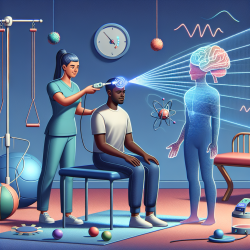Introduction
The intricacies of the human brain continue to fascinate and challenge researchers and practitioners alike. The research article titled "Short-term variations in response distribution to cortical stimulation" by Lesser et al. (2008) provides groundbreaking insights into how the brain's response to electrical stimulation can vary rapidly. This blog aims to explore how practitioners, particularly those involved in online therapy services like TinyEYE, can leverage these findings to enhance therapeutic outcomes and encourage further research.
Understanding Cortical Stimulation
Cortical stimulation involves applying electrical impulses to specific brain regions to study and influence brain function. This technique is pivotal in localizing motor, sensory, and language functions, especially in patients undergoing brain surgery. The study by Lesser et al. reveals that responses to such stimulation can vary significantly within seconds, influenced by the brain's local state and functional architecture at the time of stimulation.
Key Findings and Implications
The research highlights several critical findings:
- Dynamic Response Variability: The study found that the occurrence and location of afterdischarges (epileptiform discharges following stimulation) can change within seconds, both near and far from the stimulation site. This suggests that the brain's response is not static but highly dynamic.
- Local Brain State Influence: The likelihood of afterdischarges at a site was predicted by the local electroencephalographic activity just before stimulation, rather than overall cortical activity. This emphasizes the importance of the local brain state in determining response patterns.
- Functional Connectivity: Afterdischarges were more likely to occur at sites where stimulation affected similar functions, indicating a complex network of functional connectivity across the cortex.
Applications for Practitioners
For practitioners, especially those in special education and therapy, these findings open new avenues for enhancing therapeutic strategies:
- Personalized Therapy: Understanding that brain responses can vary rapidly suggests the need for personalized therapy approaches that consider the individual's unique brain state and functional architecture.
- Predictive Interventions: By monitoring local brain activity, practitioners can potentially predict and optimize the timing and location of interventions, whether to prevent seizures, accelerate learning, or aid rehabilitation.
- Encouraging Further Research: The dynamic nature of cortical responses underscores the importance of continuous research. Practitioners are encouraged to collaborate with researchers to explore how these findings can be translated into practical applications.
Conclusion
The research by Lesser et al. provides a deeper understanding of the brain's dynamic response to cortical stimulation. For practitioners, this knowledge is invaluable in refining therapeutic approaches and encouraging further exploration of the brain's complex networks. By embracing these insights, we can enhance our ability to support individuals in their educational and therapeutic journeys.
To read the original research paper, please follow this link: Short-term variations in response distribution to cortical stimulation.










